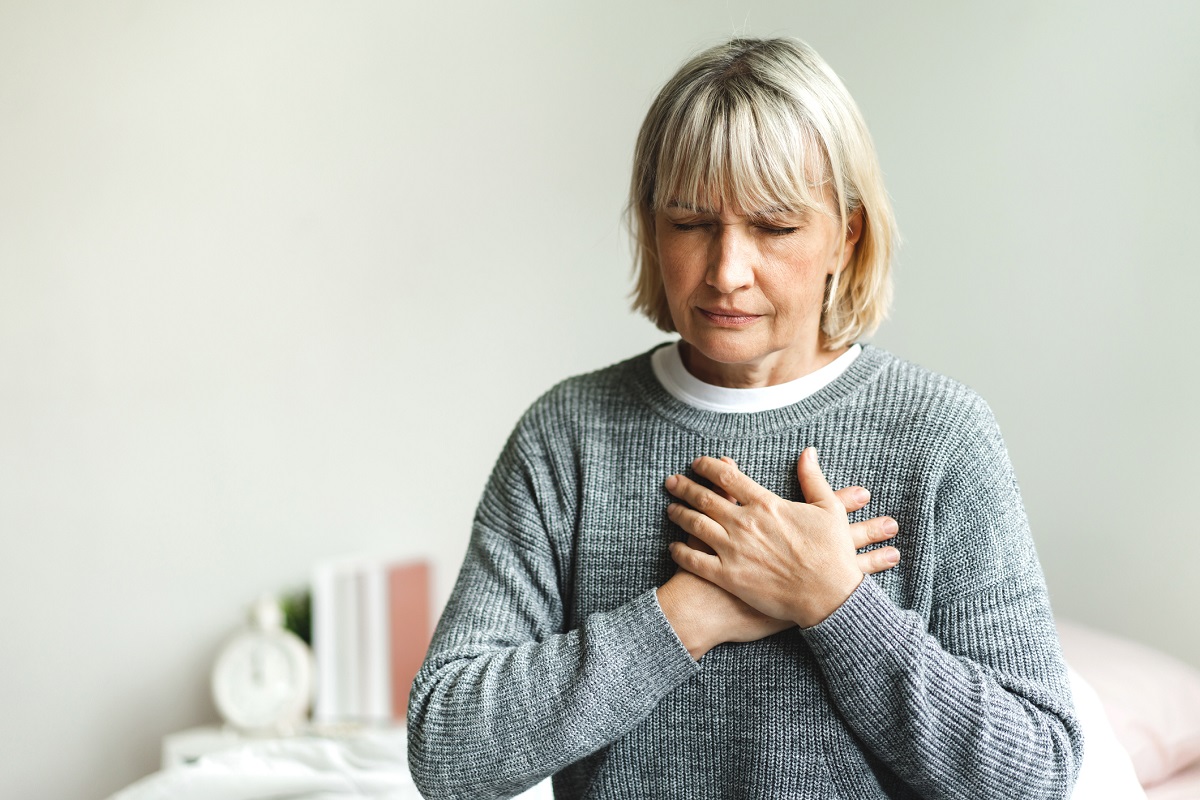Chest pain. A racing heart. Shortness of breath. Sweating. They’re all signs of a heart attack. They’re also signs of a panic attack. But while panic attacks aren’t deadly, heart attacks kill. That’s why knowing the difference could save a life.
Both panic attacks and heart attacks activate flight-or-fight hormones inside the body. “A panic attack causes an almost unnecessary activation of that hormone system, while a heart attack causes an appropriate activation,” says Dr. Michael Farbaniec, a cardiologist at Penn State Health Milton S. Hershey Medical Center.
Heart attacks signal the blockage of an artery, which restricts the heart muscle from getting enough blood to do its job. Symptoms won’t go away until a person gets emergency medical attention. In a panic attack, symptoms will clear. But people should take both types of attack seriously.
Only a medical professional can say with 100% certainty whether someone experienced a heart attack or a panic attack. But these three clues can help people understand their risk:
- Health history – Men age 45 and older and women age 55 and older are at higher risk for a heart attack than younger men and women. People with high blood cholesterol and triglyceride levels, high blood pressure, obesity, diabetes, metabolic syndrome or a family history of heart attacks also run high risk. ”If a young person with no risk factors experiences chest pain, the likelihood of it being a heart attack is very low,” says Dr. Rajesh Dave, an interventional cardiologist at Penn State Health Holy Spirit Medical Center. “But chest pain in a 50-year-old man who’s a long-time smoker with a 20-year history of diabetes most likely signals a heart attack and needs urgent medical care.” For panic attacks, the main risk factors are stress and anxiety. But even anxiety could signal either type of attack. A 2010 study of nearly 250,000 patients found that having anxiety led to a 26% increase in coronary artery disease, which is a precursor to a heart attack.
- What happens right before symptoms start – People who suffer a heart attack sometimes feel other milder symptoms in the weeks or days prior to the attack. Heart attacks also most often happen during exertion—walking, climbing stairs, shoveling snow or performing other physical activity. Panic attacks typically happen while a person is at rest and may follow an anxiety trigger, such as receiving bad news.
- How long symptoms last – Panic attacks will last for about 20 minutes, then go away. In heart attacks, symptoms get worse over time and don’t go away without medical intervention.
People experiencing a panic attack should sit in a calm, dark place and take deep breaths, which will help slow the heart rate. “If you can’t tell whether it’s a panic or heart attack—or just want to be sure—call 911 and get seen right away,” Farbaniec says.
People looking to prevent heart attacks should take steps to reduce their risk factors, such as adapting a heart-healthy diet or starting an exercise regimen. People looking to prevent panic attacks should investigate meditation, yoga and other stress-reducing techniques. “And quitting smoking will reduce your risk for both panic and heart attacks,” Dave says.
The Medical Minute is a weekly health news feature produced by Penn State Health. Articles feature the expertise of faculty, physicians and staff, and are designed to offer timely, relevant health information of interest to a broad audience.
